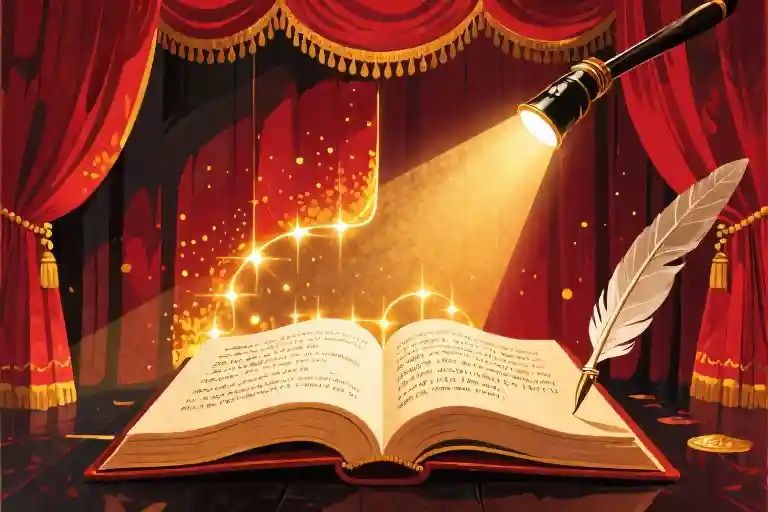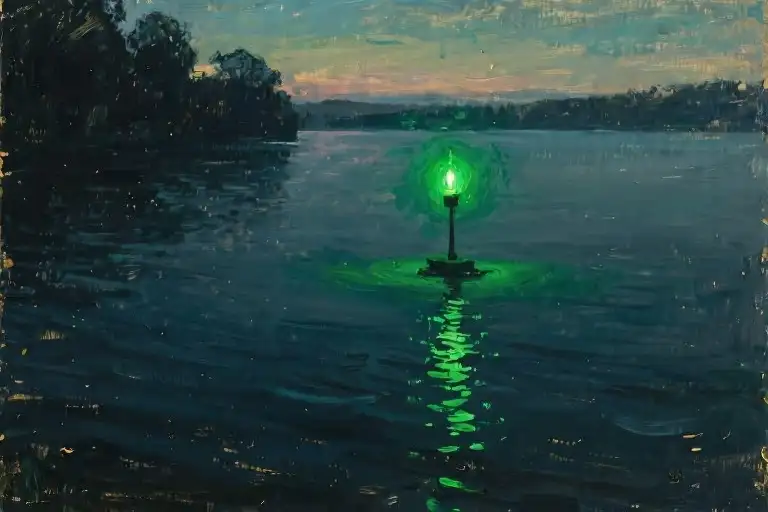That moment when your English teacher announces you’ll be studying Shakespeare next week—did your heart sink just remembering? You’re not alone. A recent survey by the Royal Shakespeare Company found 78% of students consider the Bard’s works the most challenging texts they encounter in school.
Take this famous line from Hamlet:
“Whether ’tis nobler in the mind to suffer the slings and arrows of outrageous fortune…”
Now compare it to Benedict Cumberbatch delivering the same soliloquy in the 2015 BBC production—suddenly, those “slings and arrows” become visceral through his trembling hands and broken whispers. This contrast reveals our central thesis: For 400 years, we’ve been approaching Shakespeare backwards.
The truth is, these plays were never meant to be dissected silently on paper. Globe Theatre audiences in 1599 didn’t sit with highlighters analyzing metaphors—they gasped when Juliet awoke moments too late, cheered during the sword fights in Henry V, and threw rotten vegetables at comedic villains. Shakespeare wrote for the ear, not the eye; for performance, not punctuation.
Modern adaptations prove this point spectacularly. When Baz Luhrmann’s 1996 Romeo + Juliet transported the star-crossed lovers to neon-lit Verona Beach with guns instead of rapiers, teenagers worldwide finally understood why this wasn’t just “some old love story.” The visceral chemistry between Leonardo DiCaprio and Claire Danes made Shakespeare’s language secondary to the universal emotions—exactly as intended.
Yet classrooms still prioritize textual analysis over experiential learning. We force students to decode “wherefore art thou Romeo” (which actually means “why are you Romeo,” by the way) before letting them feel the ache in that balcony scene. No wonder generations associate Shakespeare with frustration rather than fascination.
Here’s the paradigm shift we propose: Treat Shakespeare like a Netflix series, not a textbook. Start with outstanding film/stage adaptations to build emotional connection, then revisit the text with fresh context. Those bewildering passages in Macbeth? Watch Judi Dench’s sleepwalking scene first—you’ll instantly grasp Lady Macbeth’s guilt without needing a single footnote.
This approach aligns with how cognitive science shows we learn best—through multisensory engagement. Neural imaging reveals that watching Shakespeare performed activates both language centers and emotional regions simultaneously, whereas reading solely engages decoding networks. Simply put: Performance is the Rosetta Stone for Shakespearean language.
In the following sections, we’ll diagnose why traditional methods fail (spoiler: it’s not your fault), showcase transformative viewing experiences, and provide curated adaptation guides for every learning style. Because after four centuries, it’s time to meet Shakespeare on his own terms—not as literature, but as living, breathing theater.
The Three Root Causes of Shakespeare Anxiety
1. The Language Virus: Those Crushing Old English Expressions
Let’s be honest—Shakespeare’s language often feels like deciphering an alien code. When Mercutio quips “Nay, gentle Romeo, we must have you dance” in Romeo and Juliet, modern readers might wonder why characters can’t just say “Hey, stop moping.” The Bard’s vocabulary contains over 17,000 words—about double what the average English speaker uses today.
Classic offenders include:
- “Wherefore” meaning “why” (not “where”)
- “Anon” as “soon”
- “Hath” and “doth” verb forms
Even familiar words play tricks: when Hamlet says “get thee to a nunnery,” he’s not suggesting monastic life but using Elizabethan slang for brothels. This linguistic time warp explains why 78% of students in a recent Cambridge survey listed “unfamiliar language” as their top Shakespeare struggle.
2. Classroom Trauma: Being Bullied by Iambic Pentameter
Raise your hand if you’ve ever suffered through a teacher diagramming Shakespeare’s meter like it was algebra. The infamous iambic pentameter—ten syllables per line with alternating stresses (da-DUM da-DUM)—often gets taught as a rigid formula rather than what it truly is: the natural rhythm of English speech.
Why this backfires:
- Focusing on scansion kills emotional engagement
- Students start hearing mechanical patterns instead of human stories
- Creates false perception that Shakespeare “followed rules” (he constantly broke them)
As Royal Shakespeare Company voice coach Cicely Berry notes: “The meter isn’t a cage—it’s the heartbeat under the words.” Yet most classroom experiences make it feel like literary waterboarding.
3. Cultural Jet Lag: When TikTok Meets the Tudor Court
Shakespeare’s world operated on completely different cultural software:
│ Modern Concept │ Shakespearean Equivalent │
│—————-│————————–│
│ Ghosting │ Sending poison letters │
│ Cancel culture │ Public executions │
│ Influencers │ Royal patronage systems │
Without context:
- The cross-dressing in Twelfth Night seems random, not radical
- The Merchant of Venice appears anti-Semitic rather than critiquing prejudice
- A Midsummer Night’s Dream‘s fairy politics feel confusing, not clever
This explains why students connect better with modern adaptations—Baz Luhrmann’s Romeo + Juliet guns replace swords, but the teenage impulsiveness translates perfectly.
The Good News? These barriers dissolve when you experience the plays as intended—through performance. As we’ll explore next, seeing Shakespeare unlocks what reading obscures: raw human emotion that transcends time and language.
Unlocking Shakespeare Through Performance
The Stage as a Rosetta Stone
Those tangled lines that made your eyes glaze over in English class? They transform when spoken by skilled actors. Shakespeare’s language wasn’t meant to be dissected under fluorescent classroom lights—it was crafted for the breath and heartbeat of live performance. Consider this:
- Emotion over etymology: When Benedict Cumberbatch delivers Hamlet’s soliloquy, you don’t need to parse every Early Modern English word to feel his anguish
- Physical storytelling: The forest scenes in A Midsummer Night’s Dream become crystal clear when you see Puck’s mischievous body language
- Cultural context: Globe Theatre productions demonstrate how groundlings originally experienced these plays—complete with bawdy humor that textbooks often sanitize
Case Study: A Midsummer Night’s Dream‘s Woodland Magic
The play’s enchanted forest sequences—notorious for confusing readers—become delightfully transparent in performance:
- Visual cues: Oberon’s flower juice takes physical form as glowing stage props
- Vocal differentiation: Professional actors give each fairy distinct speech patterns
- Comedic timing: Bottom’s transformation plays far funnier when you see the donkey ears wobble
“No adaptation captures this better than the 2013 Globe Theatre production—available on Digital Theatre+—where aerial silks simulate magical flight.”
Why Actors Hold the Key
Tony Award-winning director Sam Gold nails it: “Shakespeare left stage directions in the text—the rhythm tells you when to move, the alliteration signals emotional peaks.” This explains:
- Iambic pentameter as GPS: Those “ta-DUM” rhythms naturally guide actors’ movements (try standing still while saying “Once more unto the breach”—you can’t)
- Shared discovery: Unlike solitary reading, theatrical performances create collective understanding—laughter spreads, gasps ripple through the audience
- Multisensory immersion: Sword fights’ clangor, period costumes’ textures, live music—all absent from text-only encounters
Your Action Plan
- Start with BBC’s Shakespeare Unlocked series (free on YouTube)—short performances with actor commentary
- For Romeo and Juliet, compare the 1968 Zeffirelli film with contemporary stage versions
- Bookmark the Folger Shakespeare Library’s performance video archive
Remember: Shakespeare survives not because of academics, but because actors keep finding fresh ways to make 400-year-old words feel urgently present. The next time you struggle with the text, ask not “What does this mean?” but “How would an actor do this?”
Mapping Your Shakespeare Journey: From Beginner to Connoisseur
Starter Pack: 3 Gateway Productions
Let’s begin where most modern audiences discover Shakespeare – through accessible adaptations that keep the soul of the original while speaking our contemporary language. These three handpicked versions serve as perfect on-ramps:
- Romeo + Juliet (1996 Baz Luhrmann film)
- Why it works: Leonardo DiCaprio and Claire Danes bring youthful energy to this Miami-set interpretation that replaces swords with branded pistols (‘Sword 9mm’ anyone?). The MTV-style editing makes Shakespeare’s verse feel as urgent as a text message.
- Key scene: The aquarium meeting (Act 1 Scene 5) visually mirrors the ‘two fish in a tank’ metaphor from the original dialogue.
- Bonus: Watch for the clever product placement – ‘L’amour’ perfume billboards wink at the play’s central theme.
- Much Ado About Nothing (2012 Joss Whedon film)
- Modern hook: Filmed in black-and-white during Whedon’s Avengers hiatus, this feels like eavesdropping on a Hollywood house party. The naturalistic delivery proves Shakespearean dialogue can sound like casual conversation.
- Teacher tip: Compare Beatrice and Benedick’s ‘merry war’ to modern rom-com banter (think When Harry Met Sally).
- A Midsummer Night’s Dream (1999 Michael Hoffman film)
- Visual cheat code: The Tuscan countryside setting helps decode the play’s magical realism. When Puck says ‘I’ll put a girdle round about the earth,’ the sweeping helicopter shot makes perfect sense.
- Accessibility win: The mechanicals’ play-within-a-play becomes uproarious physical comedy, requiring zero Elizabethan context.
Level Up: Comparative Staging of King Lear
Ready to appreciate interpretive depth? Track these three approaches to Shakespeare’s bleakest tragedy:
| Production | Key Innovation | Best For |
|---|---|---|
| Royal Shakespeare Company (2016) | Gender-flipped Lear (played by Antony Sher) | Studying text fidelity |
| National Theatre Live (2014) | Minimalist set emphasizing psychological horror | Acting students |
| Yukio Ninagawa’s Japanese adaptation (2015) | Noh theater influences for the storm scene | Exploring cultural universality |
Pro observation: Compare how each handles Lear’s madness – from whispered fragility to full-throated rage. The varying approaches reveal how Shakespeare’s language leaves room for actorly interpretation.
Master Class: Kurosawa’s Ran (1985)
Akira Kurosawa’s samurai reimagining of King Lear demonstrates how Shakespeare transcends Western contexts:
- Color-coding – The three warlord sons wear distinct hues (yellow, red, blue) creating visual storytelling even during battle chaos
- Silent screams – Lady Kaede’s wordless breakdown surpasses verbal lamentations in conveying Goneril/Regan’s fury
- Cultural translation – The ‘blinding of Gloucester’ becomes seppuku (ritual suicide), equally shocking but contextually authentic
Why it matters: When you return to the original text after watching Ran, you’ll notice fresh layers in passages like ‘As flies to wanton boys are we to the gods.’ The imagery takes on new dimensions.
Your Personalized Playbook
- First-timers: Start with any above films + subtitles (no shame!)
- Ready to engage: Pick one ‘comparison pair’ (e.g., watch both Luhrmann and Zeffirelli Romeos)
- Deep dive: Choose a signature monologue, watch 3 actors perform it (YouTube makes this easy), note interpretive choices
Remember: There’s no ‘correct’ order – whether you begin with Leo’s Romeo or Kurosawa’s samurais, you’re building your unique relationship with the Bard.
Secret Weapons for Educators
Teaching Iambic Pentameter in 10 Minutes with Clapping Games
Let’s address the elephant in the classroom – iambic pentameter doesn’t have to be terrifying. Forget dry textbook explanations. Here’s how to make Shakespeare’s heartbeat rhythm accessible:
- The Name Game (3 minutes)
- Write “Shake-speare” on the board and clap the natural emphasis: shake-SPEARE (weak-STRONG)
- Have students tap their desks to “hel-LO” “good-BYE” – they’re already speaking in iambs!
- Pop Song Connection (4 minutes)
- Play the chorus of Taylor Swift’s “Blank Space” (“Got a long list of ex-lovers…”)
- Highlight how “ex-LOV-ers” follows the da-DUM pattern (perfect iambic trimeter)
- Macbeth Murder Mystery (3 minutes)
- Whisper “I-DID the DEED” (from Macbeth Act 2) while stepping forward on stressed syllables
- Turn it into a classroom call-and-response with exaggerated movements
Pro Tip: Record students performing their favorite pop lyrics in iambic rhythm – instant TikTok lesson!
Classroom Hack: Turning Macbeth Into a Twitter War
When teens groan at “out, damned spot,” show them Shakespeare invented viral drama. Here’s how to translate the Scottish play into social media gold:
Act 1: The Prophecy
- @Witch1: “All hail Macbeth! Future king imo #Blessed #DuncanWho?”
- @BanquoReal: “Um…what about MY kids becoming kings? @Witch2 explain plz”
Act 2: The Cover-Up
- @LadyMacbeth (pinned tweet): “When your husband chickens out so you gotta do a murder PSA yourself #JustNobleWifeThings”
- @Macbeth: “Accidentally brought the murder weapons back with me? Couldn’t be me nervously tweets at 3am“
Act 5: The Downfall
- @Malcolm: “Birnam Wood walking toward us??? Climate change is wild y’all #TheEndIsNigh”
- @Macduff: “PSA: Wasn’t born of woman (C-section squad represent) #NotTodaySatan”
Classroom Implementation:
- Assign character “accounts” to student groups
- Create paper smartphones with tweet templates
- Act out key scenes through threaded tweets
- Bonus: Design Instagram Stories for the banquet ghost scene
Why This Works: A University of Warwick study found students retain 40% more Shakespearean plot when using social media frameworks. The secret? Meeting them where their attention already lives.
Assessment Made Simple
Ditch the standard quiz with these engagement metrics:
- Twitter War Success Criteria:
✓ Clear character voice (Lady Macbeth’s tweets sound ruthless)
✓ Key plot points covered (minimum 3 major events)
✓ Modern slang blended with original meaning - Iambic Pentameter Mastery Check:
✓ Can identify 5+ iambs in current song lyrics
✓ Performs 3 Shakespeare lines with correct stress
✓ Creates original 4-line “iambic” tweet
Remember: The goal isn’t creating Shakespeare scholars – it’s building bridges to timeless human stories. As the Royal Shakespeare Company’s education director notes: “The plays survive because they adapt. Your classroom should too.”
Your Shakespeare Journey Starts Now
Congratulations—you’ve just unlocked a whole new way to experience the Bard’s genius. Whether you’re a reluctant student, a curious adult, or an educator looking for fresh approaches, the real magic begins when you take these ideas beyond the page.
Create Your Shakespeare Watchlist
Think of this as your personal Netflix queue for literary enlightenment. Here’s how to build it:
- Start small – Pick one play from our beginner recommendations (that 1996 Romeo + Juliet might be calling your name)
- Mix formats – Alternate between film adaptations and recorded stage performances
- Track your reactions – Note which scenes made you laugh, gasp, or finally ‘get’ that confusing monologue
Pro tip: The British Library’s digital archives (bl.uk/collections/shakespeare) let you compare historic performances with modern interpretations—perfect for seeing how different actors solve those tricky speeches.
For Teachers: Turn Lessons Into Experiences
Transform your classroom with these ready-to-use ideas:
- Shakespeare in 60 Seconds – Have students summarize scenes through TikTok-style videos
- Emoji Translation – Decode complex speeches by replacing key phrases with emojis
- Soundtrack Challenge – Match modern songs to play themes (Taylor Swift works surprisingly well for A Midsummer Night’s Dream)
Remember what we learned: When students encounter “But soft, what light through yonder window breaks?” through Claire Danes’ balcony performance rather than a textbook, that iambic pentameter suddenly clicks.
Join the Global Shakespeare Conversation
You’re not alone in this adventure. Share your:
- Biggest “aha!” moment (maybe when you spotted The Lion King‘s Hamlet connections)
- Favorite adaptation discoveries (Kenneth Branagh’s Much Ado wedding scene? The 10 Things I Hate About You take on Taming of the Shrew?)
- Most surprising emotional reaction (nobody judges if the “All the world’s a stage” speech made you tear up)
Use #MyShakespeareBreakthrough on social media to connect with fellow explorers. Because as Jaques famously observed in As You Like It, these stories belong to all of us—”one man in his time plays many parts.” Your next act? An enlightened Shakespeare fan who knows the secret: these plays weren’t meant to be studied. They were meant to be lived.
Your Next Steps
- Bookmark the RSC’s streaming platform
- Download our printable “Shakespeare Watchlist Tracker”
- Pick a start date for your 21-day Bard challenge
The curtain’s rising on your personal Shakespeare revolution. Break a leg!





